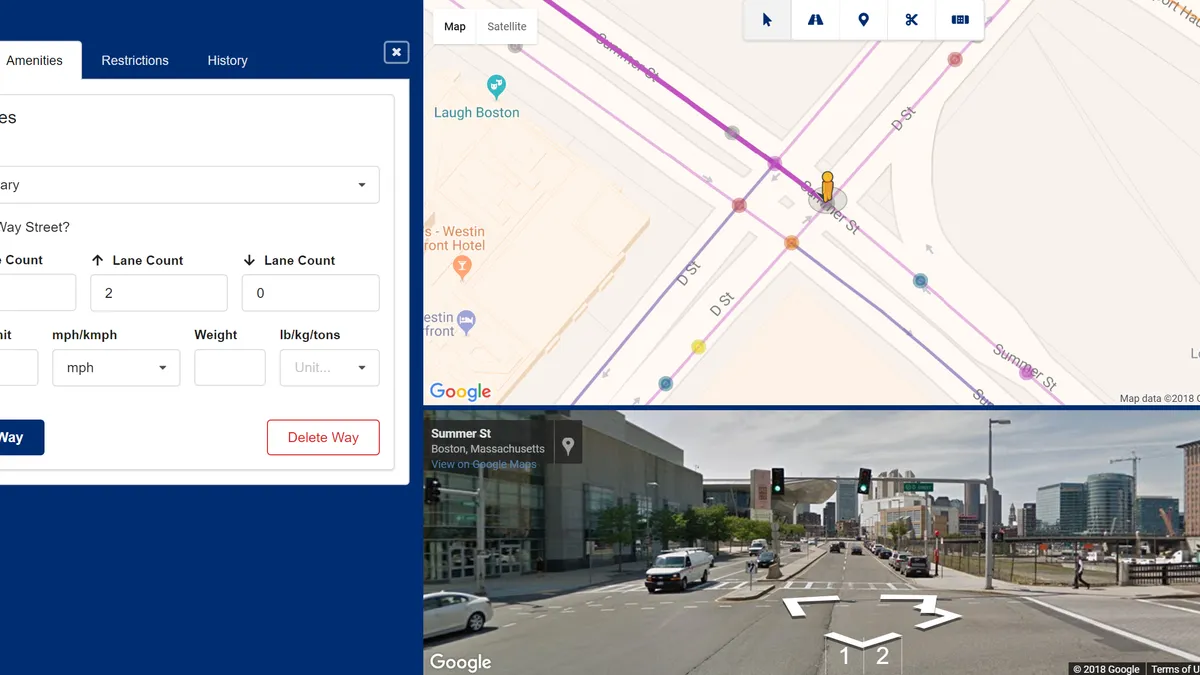Dive Brief:
- Transportation analytics company Inrix has released a platform, AV Road Rules, that allows cities and transportation authorities to communicate with autonomous vehicle (AV) operators.
- Authorities will be able to digitize and communicate restrictions related to speed limits, stop signs, school zones and crosswalks. AVs will be able to communicate back to authorities with road infrastructure needs.
- Four AV manufacturers, four U.S. cities and three transportation authorities have agreed to be part of the first AV Road Rules pilot: Jaguar Land Rover; May Mobility; nuTonomy; operators running Renovo’s Aware platform; Austin, TX; Boston; Cambridge, MA; Portland, ME; Regional Transportation Commission of Southern Nevada which includes Las Vegas; Transport for West Midlands and Transport Scotland in the U.K.
Dive Insight:
Inrix suggests that fostering communication directly between AVs and authorities is more exact than traditional communication like posting road signs or painting streets with lane markings and crosswalks. The company also indicates its platform is more precise and cost effective than the current AV communication method of using sensors, machine learning and third-party data sets.
If the platform works as planned, it could indeed end up being more precise and providing better safety protections. Vehicles would not run the risk of missing road signs that may have been knocked down or street paint that has faded to the point of being barely perceptible. The direct data exchange with the city would provide the most updated rules that authorities expect drivers — even virtual drivers — to follow.
One challenge for municipalities will be to compile all of the necessary information to make it readily available. The regulatory guidelines likely will be spread out among multiple departments in various formats. For example, a city's Department of Transportation might have information about speed limits, designated bike lanes and high-occupancy vehicle lanes, while the Streets and Sanitation Department houses information about street sweeping schedules and restrictions. Each department will have to ensure its relevant information is entered into the system in order for it to function properly. System maintenance is also important as rules are updated, but generally speaking, that happens infrequently and the process shouldn't take too long.
Cities constantly look for new data to collect that could help improve municipal operations and services. They request transportation data from ride-share and bike-share companies that have vehicles on the streets, in addition to gathering data from their own publicly installed sensors and other smart devices. Receiving direct feedback about infrastructure needs from AVs via the Inrix platform about would help to fill the hunger for such data. It appears like the two-way platform might offer the information in an easier format than other information gathering techniques.
Inrix says the pilot program with its 11 partners will help to refine and expand the platform. "This is an important project that will explore how our city shares information with vehicles and vice versa," Kris Carter, co-chair of the Mayor’s Office of New Urban Mechanics in Boston, said in a statement.












